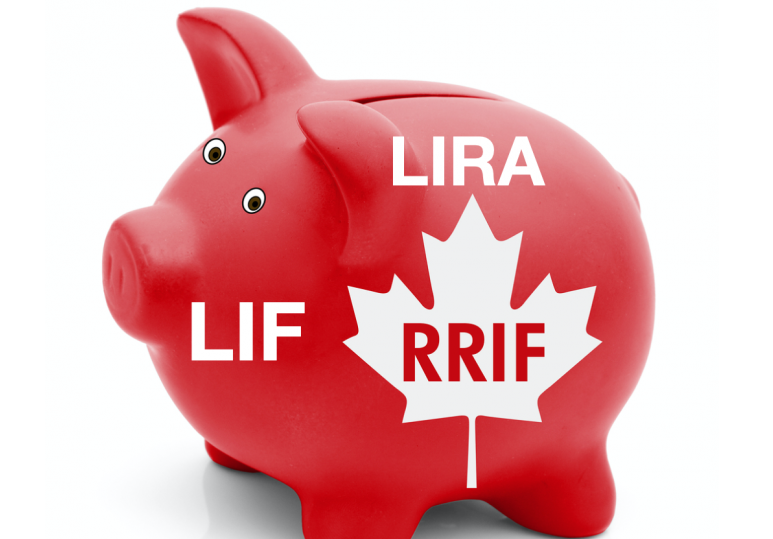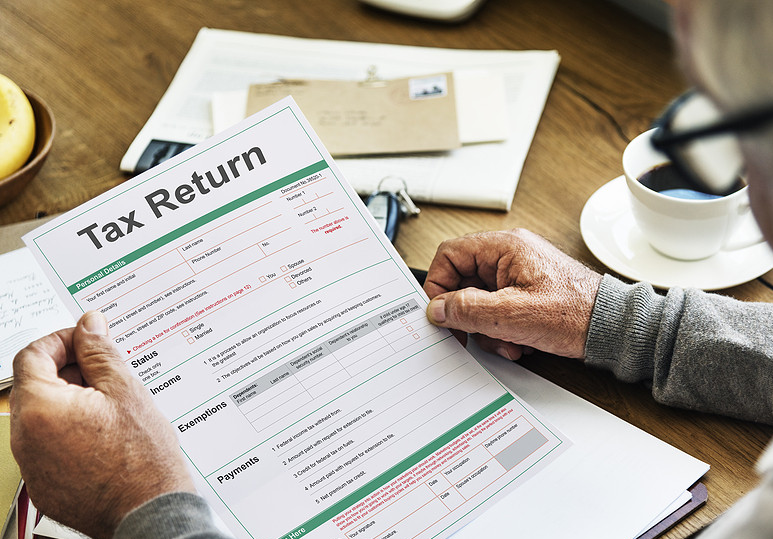Here are the 5 scenarios where you can withdraw money from a LIRA (Locked-In Retirement Account).
The normal process for accessing the money inside a LIRA or LRSP to convert it to a LIF, which is a lifetime income fund, and start withdrawing income on an annual or monthly basis. You will need to be over age 55 in most cases and you are limited to a minimum and a maximum withdrawal each year. The latest you can wait to make this conversion is age 71. There are some exceptions that I will outline below.
These are the rules for an Alberta LIRA:
1. Access due to Considerably Shortened Life
If you have a terminal illness or a disability that will shorten your life, you may be able to unlock your pension, LIRA, LRSP or LIF. Your spouse/partner would have to give up his or her right to a joint and survivor pension by signing the pension partner waiver. Your doctor must provide a letter that states you are expected to have a considerably shortened
life. The letter does not need to state the type of illness or disability nor predict how long you will live. You can get the forms from the financial institution that holds your Locked-in account and they will process the unlocking for you.
2. Access by Becoming a Non-resident of Canada
If the Canada Revenue Agency (CRA) determines that you are a non-resident of Canada for tax purposes, and confirms this in writing, you may unlock your LIRA or LIF. You can apply for non-residency status by completing the federal form NR-73 E(12). This form is available on the CRA website. Follow their instructions. If you qualify, CRA will send you a letter confirming that you are a non-resident of Canada for purposes of the ITA.
To unlock your money, you must give your pension plan or financial institution a copy of the CRA letter along with the necessary paperwork which they will provide and process for you.
Please call the CRA at 1-800-267-5177 if you have questions about non-residency.
3. Access to Small Amounts
Sometimes the money in a LIRA, LIF or a pension plan, at termination, is too small to provide a useful pension. A small amount may be unlocked. Please note that the age 65 unlocking does not apply to money in a pension plan.
For 2020, if you are under age 65 and the amount in any single locked-in account is less than $11,740 on the day you ask for the withdrawal, the account can be unlocked. If you are age 65 or older and the amount in any single locked-in account is less than $23,480 on the day you ask for the withdrawal, the account can be unlocked. There is no pension partner waiver as the amount is too small to provide a pension.
The money is unlocked by the pension plan or financial institution that has your money.
The small amounts are based on 20% and 40% of the Year’s Maximum Pensionable Earnings (YMPE). The YMPE is set each year by the Government of Canada for the Canada Pension Plan - in 2022 the YMPE is $64900.
What if my account balance is just above the limit of the small amount?
If the amount is over the limit, even by a dollar, then you cannot have your funds unlocked under the small amount rule.
You cannot split accounts to make them small enough to be unlocked.
4. Access by 50% Unlocking
If you are aged 50 or older and have terminated from a pension plan or have money in an Alberta LIRA, you may unlock up to 50% of the money when you start a LIF or LITB. Your pension partner would have to give up his or her right to a joint and survivor pension by signing Form 7 (from a pension plan) or Form 14 (from a LIRA.) The rules for LIRAs are different for every province. You have to check the jurisdiction for your pension and plan accordingly.
Can I unlock less than 50% of the account balance?
This is a one time only choice. You may unlock less than 50% of the account, but if you unlock less than 50%, you are not allowed to unlock again later. For example, if you unlock only 30% of your money, you cannot later unlock another 20% later.
The money is unlocked because you have chosen to start to receive an income. You cannot transfer the money back to a LIRA after starting a LIF or LITB. The money is unlocked by the pension plan or financial institution that has your money. The part that remains locked-in will then start paying out an annual income to you. If you are still employed you may not want to unlock your locked-in RRSP for this reason.
When is unlocking not allowed?
Unlocking is not allowed if you are receiving a pension from the plan, or if your pension plan does not allow you to transfer money out of the plan because you have reached early retirement age.
What if I unlock 50% and the money left in the account is less than the small amount?
After unlocking the 50%, if the money left is less than the small amount, you may unlock the rest of the account under that provision. Because you are then able to unlock all of the account, the money doesn’t have to be transferred to a LIF or LITB because it only creates extra paperwork for everyone.
5. Financial Hardship Unlocking (FHU)
If you have one of these 5 reasons of financial hardships, you may be able to unlock money in your LIRA or LIF. You apply to the financial institution that has your account to unlock the money. The application form is available from your financial institution or online at: finance.alberta.ca/publications/pensions/information-for-individuals.html.
You may apply for each of these reasons only once per account in a calendar year.
1. Low Income – Your income for the next twelve months will be less than $44,025. You may be eligible to unlock up to $29,350 in 2017.
2. Foreclosure - You or your pension partner have received a letter threatening foreclosure on a debt secured against your main home. The most you can unlock is the overdue amount owing including legal fees.
3. Eviction for Rent Arrears - Your or your pension partner are being evicted from your main home because you owe
rent. The most you can unlock is the amount of unpaid rent.
4. First Month’s Rent & Security Deposit – You or your pension partner need the first month’s rent and security deposit on a new rental you will be moving into.
|
|
RRSPs |
LIRAs |
Notes |
|
What is it? |
Registered Retirement Savings Plan |
Locked-In Retirement Account |
Basically a LIRA is a Locked-in RRSP so it has the same rules as RRSPs plus its own set of rules |
|
When Can I take money out? |
Whenever you want |
Not until Age 72 (there are exceptions depending on what legislation your LIRA is locked under (ie: AB, BC, ON, SK, Federal, etc.) |
Some LIRA plans allow you to unlock 50% of your LIRA at age 55. The legislation your LIRA is locked under depends on where your employer set it up. (It’s usually wherever the head office is located) |
|
Am I taxed on this money when I take it out? |
Yes, it is considered income in the year of withdrawal |
Yes, it is considered income in the year of withdrawal |
You will receive a T4A recording the amount you received
|
|
What is the Withholding Tax taken off at source when I withdraw money? |
10% if < $5000 20% if $5001-15,0000 30% if > $15,000
|
10% if < $5000 20% if $5001-15,0000 30% if > $15,000
|
Once you have converted to a RRIF or LRIF there is no withholding tax on the annual minimum you withdraw however it is still taxable as income and you will pay tax. You can opt to have tax taken off at source. |
|
How much can I take out? |
However much you want, there is no minimum or maximum |
Once you are qualified to begin withdrawing from your LRIF there is a minimum and a maximum that you can withdraw each year. |
The purpose of both of these account types is to provide income for you in retirement. The withdrawal schedule is designed to make the account provide income until, and deplete itself by, age 95. |
|
What happens at Age 71? |
Your RRSP must be converted to a RRIF |
Your LIRA must be converted to a LRIF |
At age 71 you must convert, so the institution holding your account will alert you and have you come in to sign the appropriate paperwork. “L” in LRIF means the money is still “Locked-in”. |
|
At what point am I forced to take money out? |
Not until age 72 |
Not until age 72 |
At age 72 there is a minimum that will be automatically taken out and given to you. The amount is calculated each year based on your age and the value of your account on Dec. 31 of the previous year. |
|
How can I take out the required minimum? |
“In cash” or “In kind” |
“In cash” or “In kind” |
“In kind” means taking out the investment and putting it into your non-registered account without selling the investment. This is a great way to satisfy the legislated minimum withdrawal without having to sell holdings when you don’t need the cash. This way your investments can continue to participate in market growth until you want the cash. You are still responsible for claiming the withdrawal as income in the year it was taken out of the RRIF or LRIF. |
© 2016 Langford Financial Inc.
Learn more about our fee-only planning services. Click here.
Want to retire in the next few years? Click here to Book Your Appointment
Retirement Income, Investment & Tax Planning,
Willis J Langford BA, MA, CFP
Nancy Langford CRS
Our process utilizes more than 20 techniques that will save you $1000’s in taxes by taking your income from your various sources in the right order. Your strategic retirement income plan will enable you to spend money with confidence and finally press the play button on your dreams







